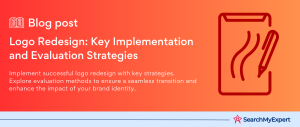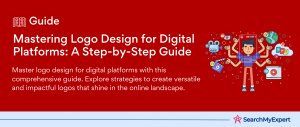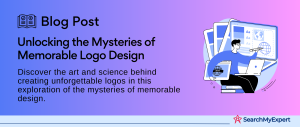Logo Design Software and Tools
The Power of Logos in Branding
In the world of branding, a logo is more than just a graphic; it’s a symbol of identity, a beacon of brand recognition. Imagine the golden arches of McDonald’s or the swoosh of Nike – these logos transcend their physical designs, embedding themselves into the cultural fabric. In this digital era, where branding battles are won and lost in seconds, the importance of an impactful logo cannot be overstated. This is where logo design software steps into the limelight.
What is a Logo?
A logo is the face of a brand, a visual cornerstone that encapsulates the essence of a company. It’s not merely an image; it’s a strategic tool in the competitive marketplace. Logos convey the values, personality, and unique identity of a brand. They are designed to be instantly recognizable, evoking trust, admiration, and loyalty in the customer.
Why Use Logo Design Software?
Gone are the days of pencil, paper, and endless erasing. In the fast-paced digital world, efficiency and precision are key. Logo design software revolutionizes the creation process, offering:
- Increased Efficiency and Precision: Software provides tools that streamline the design process, allowing for quick adjustments and precise editing.
- Access to a Wider Range of Design Elements and Tools: From a vast array of fonts to a spectrum of color palettes, logo design software offers endless creative possibilities.
- Easier Collaboration and Revision:
With software, sharing designs and receiving feedback becomes a breeze, ensuring that the final logo is a collaborative and well-refined product.
Types of Logo Design Software
Vector-Based Software: Crafting Perfection
Vector-based software is the go-to choice for professional logo designers. Why? Because vectors are all about precision and scalability. Unlike raster images that lose quality when scaled, vector graphics maintain their crispness and clarity no matter the size. This is crucial for logos, which need to look equally sharp on a business card and a billboard.
Advantages of Vector-Based Software:
- Scalability: Scale your logo to any size without losing quality.
- Editability:
Modify individual elements with ease, thanks to paths and shapes. - Color Control: Achieve perfect color consistency with advanced color palettes.
Popular Examples:
- Adobe Illustrator: A powerhouse in vector graphic design, offering sophisticated tools for drawing, typography, and color manipulation.
- CorelDRAW:
Known for its intuitive interface and versatile drawing capabilities. - Inkscape:
A free, open-source option that’s great for beginners and professionals alike.
Raster-Based Software: The Detail Masters
Raster-based software, like Photoshop, excels in creating detailed, texture-rich designs. These are based on pixels, making them ideal for complex images with subtle gradations of color and shadow. However, they’re less suited for logo design due to the scalability issue – raster images can become blurry or pixelated when enlarged.
Suitability for Logo Design:
While not the first choice for logo creation, raster-based software can complement vector design, especially in adding intricate details or textures to a logo.
Online Logo Makers: Simplicity Meets Creativity
For beginners or those needing a logo in a pinch, online logo makers are a godsend. These platforms offer user-friendly interfaces, pre-designed templates, and simple customization tools.
Benefits for Beginners:
- Ease of Use:
No steep learning curve – create a logo in minutes. - Templates: Wide variety of templates to kickstart your design process.
- Cost-Effective: Many offer free versions or more affordable options than professional software.
Popular Platforms:
- Canva: Renowned for its simplicity and diverse range of templates.
- LogoMakr: Offers a straightforward design process with basic customization options.
Essential Features to Look for in Logo Design Software
Drawing Tools: The Backbone of Design
At the heart of any logo design software are its drawing tools. These are the fundamental elements that allow you to create and manipulate shapes and paths, forming the basis of your design.
Key Tools:
- Basic Shapes: Circles, squares, triangles – these simple forms are the building blocks of complex designs.
- Path Creation:
The ability to create custom paths is crucial for unique and intricate designs. - Pen Tools: Essential for precision and control, pen tools let you create and edit bezier curves and lines with ease.
Importance:
The versatility and functionality of drawing tools determine how effectively and efficiently a designer can bring their vision to life.
Text Tools: Typography as a Design Element
Text in a logo is not just about readability; it’s an integral part of the design that contributes to the overall aesthetic and message.
Typography Features:
- Typography Options: A wide range of fonts to suit different styles and brand personalities.
- Font Management: The ability to import and manage various fonts enhances design flexibility.
- Text Effects: Tools for creating effects like shadow, outline, and 3D transform add depth and character to text.
Role in Logo Design:
Good typography can make a logo memorable and impactful, reinforcing the brand identity.
Color Management: Painting Your Brand’s Personality
Color is more than a visual element; it evokes emotions and conveys messages. Effective color management tools are essential in logo design software.
Color Tools:
- Color Palettes: Pre-designed or custom palettes to ensure color consistency.
- Color Pickers: For selecting and adjusting exact shades.
- Gradient Tools:
To create smooth transitions and add dimension to designs.
Significance:
Colors chosen and how they are used can significantly affect the logo’s appeal and effectiveness.
Effects and Filters: Adding the Final Touches
Effects and filters play a pivotal role in giving a logo its final look and feel.
Enhancements:
- Shadows and Outlines: Add depth and prominence.
- Blending Modes: For creating unique color and texture effects.
- Visual Impact: The right effects can transform a good logo into a great one.
Impact:
These features help in fine-tuning the logo, ensuring it stands out and resonates with the target audience.
Advanced Features for Experienced Users
Version History and Tracking: The Backbone of Collaboration
In the world of professional logo design, the ability to track changes and collaborate effectively is crucial. Advanced design software often comes with features that not only save time but also enhance the overall creative process.
Key Aspects:
- Undo/Redo:
A lifesaver in design, allowing for risk-free experimentation. - Version Control: Keeps track of changes, enabling designers to revert to previous versions if needed.
- Collaboration Features: Facilitate teamwork, allowing multiple designers to work on the same project seamlessly.
Importance:
These features ensure a smooth workflow, especially in team environments, and help in maintaining a comprehensive record of the design evolution.
Export Options: Flexibility for Various Uses
The ability to export designs in multiple formats is a must-have for any logo design software. Different formats serve different purposes and understanding them is key to successful logo implementation.
Common Formats:
- SVG (Scalable Vector Graphics):
Ideal for web and print, retains quality at any size. - PNG (Portable Network Graphics):
Great for web use, and supports transparency. - EPS (Encapsulated PostScript):
A versatile vector format suitable for high-quality print work.
Role in Logo Design:
Choosing the right format ensures that the logo remains high quality and functional across various mediums.
Plugins and Integrations: Expanding Horizons
The ability to integrate with other tools and use plugins can significantly enhance the functionality of logo design software.
Expanding Functionality:
- Plugins:
Add specific features or streamline certain processes. - Integrations:
Connect with other design tools or platforms, like image libraries or project management software.
Benefits:
These additions can tailor the software to specific needs, making the design process more efficient and aligned with the designer’s workflow.
Popular Logo Design Software Examples
In-Depth Look at Key Players
Adobe Illustrator: The Professional’s Choice
Overview:
- Adobe Illustrator is a vector-based design software widely used by professionals for its precision and advanced features.
Features:
- Comprehensive drawing tools.
- Extensive typography and color management options.
- Advanced export capabilities and plugin support.
Pros:
- High precision and control.
- Scalable designs without quality loss.
- Integration with other Adobe products.
Cons:
- Steeper learning curve.
- Subscription-based pricing.
Canva: The User-Friendly Contender
Overview:
- Canva is an online design tool celebrated for its simplicity and accessibility, perfect for beginners and non-designers.
Features:
- Intuitive drag-and-drop interface.
- A vast library of templates and design elements.
- Basic drawing and text tools.
Pros:
- Extremely user-friendly.
- Free version available.
- Great for quick, simple designs.
Cons:
- Limited customization compared to professional tools.
- Dependent on internet connectivity.
LogoMakr: Streamlined Simplicity
Overview:
- LogoMakr offers a straightforward approach to logo design, ideal for those who need a logo without the complexities of advanced software.
Features:
- Basic vector graphics tools.
- Simple color and text editing.
- Easy-to-use interface.
Pros:
- No design skills required.
- Quick and easy to use.
- Free basic version.
Cons:
- Limited features for complex designs.
- Less control over fine details.
Brief Mention of Other Options
- CorelDRAW: A powerful alternative to Illustrator, known for its versatility in vector graphics.
- Inkscape:
A free, open-source vector graphics editor that’s a great option for those on a budget. - Other Online Platforms:
Numerous other online platforms cater to specific design needs, offering a range of templates and tools for quick logo creation.
Choosing the Right Software for You
Consider Your Skill Level
Beginner-Friendly Options:
- For Non-Designers: Platforms like Canva or LogoMakr are ideal. They offer intuitive interfaces and a plethora of templates, making logo design accessible to everyone.
- Why They Work: These tools eliminate the need for extensive design knowledge, allowing anyone to create professional-looking logos with minimal effort.
Think About Your Budget
Free vs Paid Options:
- Free Software:
Tools like Inkscape offer robust features without a price tag. Great for those on a tight budget. - Paid Software: Adobe Illustrator and CorelDRAW are premium choices, offering advanced features for serious design work.
- Value Proposition:
While free software can be highly effective, paid options typically provide more sophisticated tools and better support.
Match Your Needs to Features
Choosing Based on Goals:
- Simple Logos: Online platforms with templates are sufficient for straightforward designs.
- Complex Designs: If your goal is a more intricate logo, opt for comprehensive software like Illustrator or CorelDRAW.
- Key Consideration:
Ensure the software matches your design aspirations. More features might be overwhelming for simple projects, while basic tools might be limiting for complex designs.
Embracing the Digital Canvas
Logo design software has revolutionized how we create and perceive brand identities. These tools have not only made design more accessible but have also opened up a world of endless creative possibilities.
Recap: The Empowering Toolset
- Benefits: Efficiency, precision, variety of tools, and collaboration capabilities.
- Empowerment: Software democratizes design, enabling anyone from beginners to professionals to craft compelling logos that tell their brand’s story.
Resources and Inspiration
Embarking on your logo design journey? Equip yourself with knowledge and inspiration.
- Tutorials:
Dive into online tutorials. Websites like Adobe’s tutorial page offer comprehensive guides for various software. - Design Communities:
Platforms like Behance and Dribbble showcase work from talented designers, providing a wealth of inspiration. - Inspiration Galleries: Websites like LogoLounge and LogoMoose are treasure troves of innovative logo designs.
Now it’s your turn. Dive into the vibrant world of logo design. Whether you’re a budding designer or a seasoned pro, there’s always something new to learn, explore, and create. Experiment with different software, find what works best for you, and start shaping your unique brand identity today. The canvas is digital, and it’s vast – fill it with your creativity!
Conclusion
In the ever-evolving world of branding, logo design software has become an indispensable tool, blending creativity with technology. We’ve journeyed through the essentials, from understanding the power of logos and exploring different software types to identifying key features and making informed choices based on individual needs. Armed with this knowledge, you’re now ready to embark on your own logo design adventure, harnessing the power of digital tools to craft a unique and compelling brand identity. Remember, the right software isn’t just about features; it’s about how it aligns with your vision and creativity.
Build your visual identity with renowned
Logo Design Companies.
Table of Contents
Toggle






